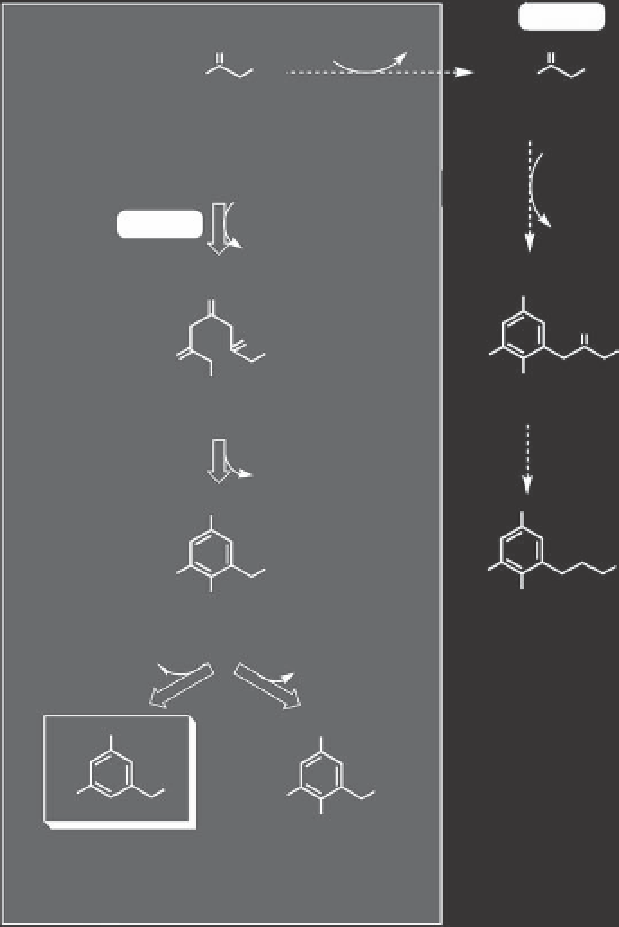Biology Reference
In-Depth Information
Route B
O
O
ACP-SH
CoA-SH
R
R
CoAS
ACPS
1a
1b
R = H (Acetyl-SCoA)
R = C
2n
(Acyl-SCoA)
(3a) R = H
Malonyl-SCoA (x3)
Route A
HS-ACP
CO
2
(x3)
OH
O
O
O
R
R
HO
O
CO-SACP
CO-SACP
7
2
Reduction
Dehydration
H
2
O
OH
OH
R
R
HO
HO
CO-SACP
CO-SACP
3a
3b
CO-SACP
HS-ACP
OH
OH
R
R
HO
HO
CO
2
H
4
5
(orcinol)
5-alkylresorcinols
(orcellinic acid)
6-alkylresorcinolic acids
Fig. 10.2.
Hypothetical pathways involved in the biosynthesis of alkylresorcinols (ARs).
Anacardiaceae, Gramineae, Proteaceae,
Myrsinaceae, Primulaceae, Myristinaceae,
Iridaceae, Araceae, Asteraceae and Fabaceae
(Kozubek and Tyman, 1999; Kozubek
et al
.,
2001; Zarnowsky and Kozubek, 2002).
Although most ARs occur as mixtures con-
taining several homologues differing in the
length of the alkyl chain and degree of
unsaturation, several plants also produce AR
derivatives with modifications in the ring,
the alkyl side chain or both (Fig. 10.3).
Some examples are: the prenyl bis-resorcinols
from stems of
Grevillea floribunda
and
bis-resorcinols from leaves of
Oncostemon
bojerianum
, which contain two benzene
rings attached to both ends of the alkyl or
alkenyl chain (Prakash Chaturvedula
et al.
,
2002; Wang
et al.
, 2009); cichoriols A-D,
isolated from aerial parts of
Cichorium spino-
sum
, which are 5-n-ARs with a methoxy
group and a methyl group attached at posi-
tions 3 and 2 of the benzene ring, respectively
(Melliou
et al.
, 2003); 5-n-AR derivatives
from
Ononis
with free or modified hydroxy
and/or keto substituents in the alkyl chain and
of the ring-attached hydroxylic groups to form

Search WWH ::

Custom Search